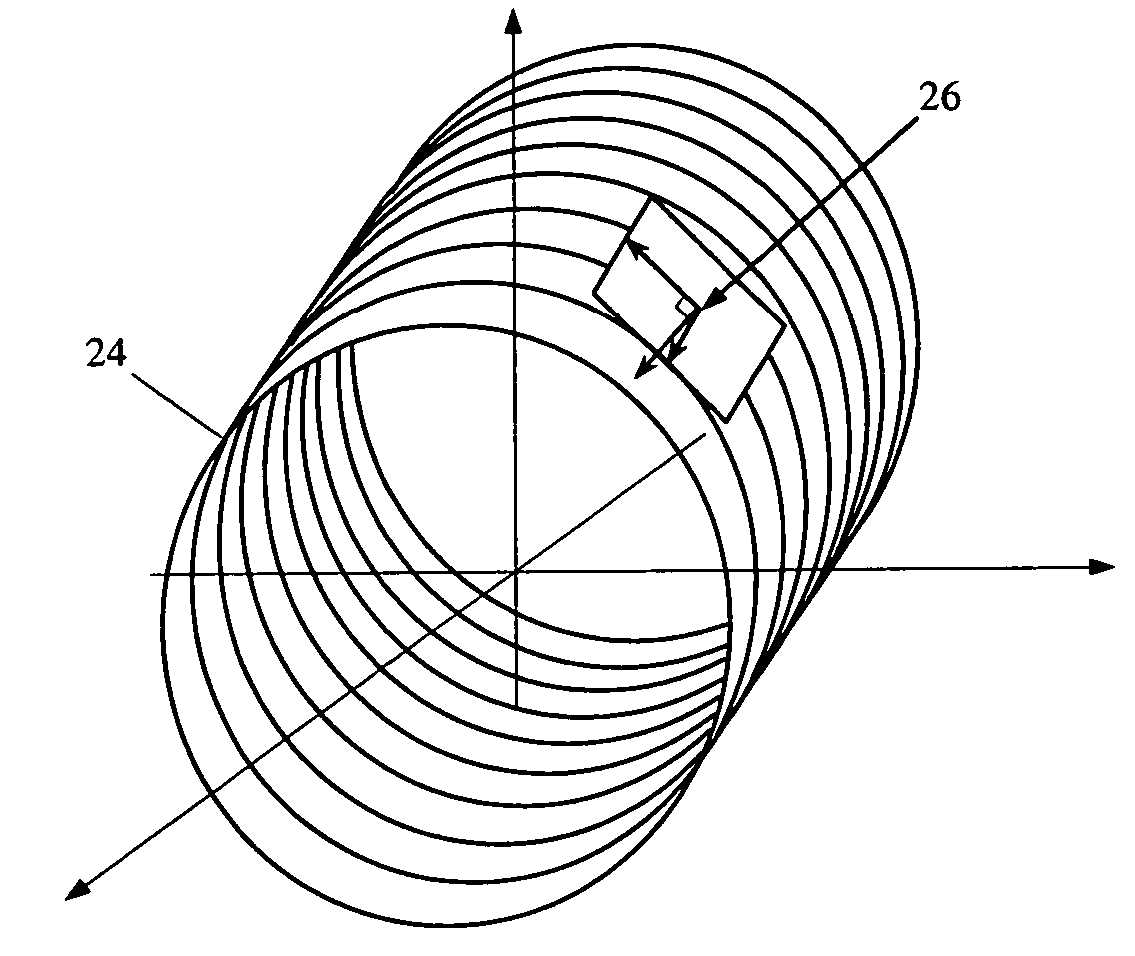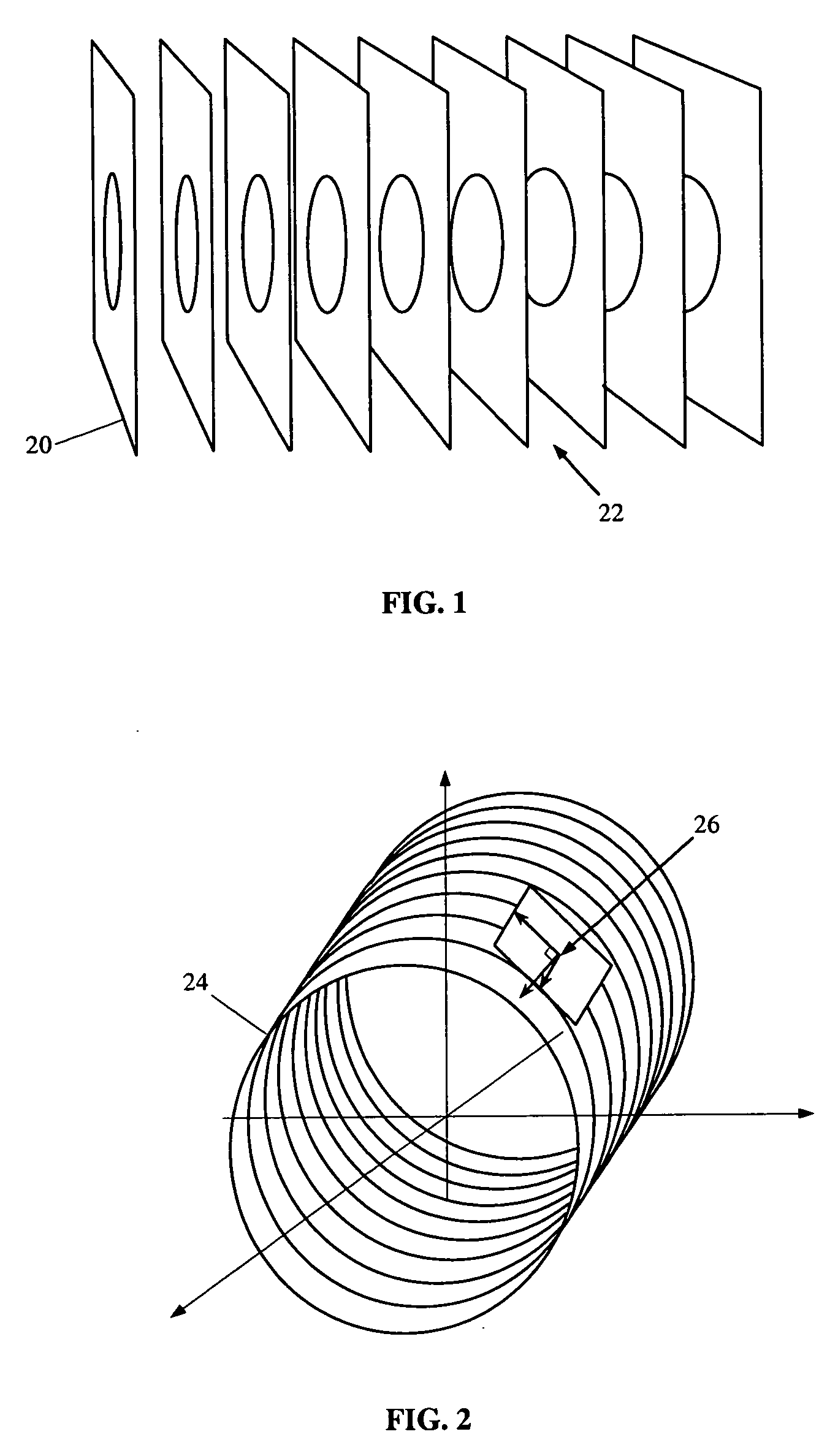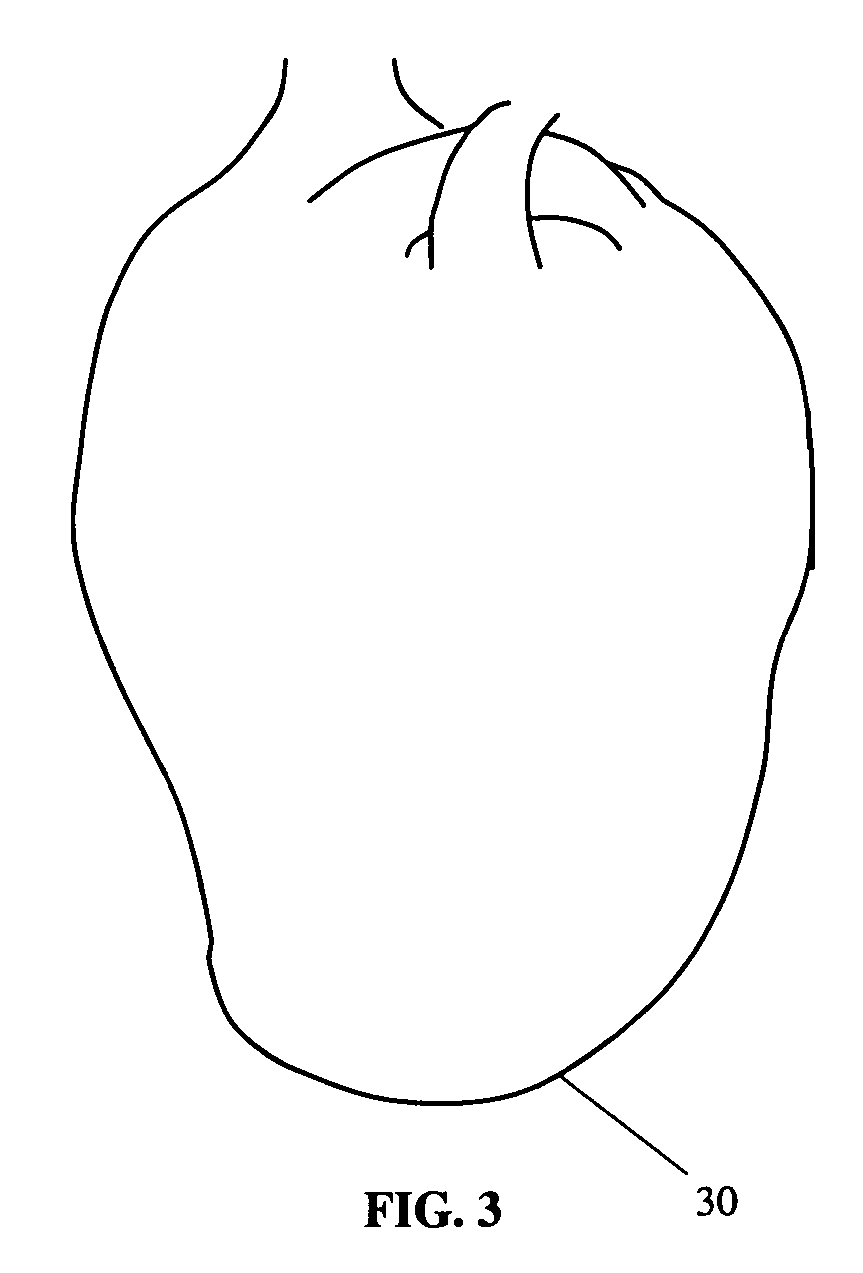Registration of three dimensional image data to 2D-image-derived data
a three-dimensional image and data technology, applied in image analysis, image enhancement, instruments, etc., can solve the problem of difficult for a physician to become oriented in a three-dimensional setting using a single-plane x-ray image projection display
- Summary
- Abstract
- Description
- Claims
- Application Information
AI Technical Summary
Benefits of technology
Problems solved by technology
Method used
Image
Examples
second embodiment
[0018] In a second embodiment, the software could reconstruct the 3D vessel centerline and display it as a 3D model, possibly as a tubular surface, in a 3D window on a Graphical User Interface. The user could select pairs of points as described above, directly on the 3D model, and these could be used for the registration. In this case the 2D images are not directly used to perform the registration with the 3D anatomical data; instead the 3D reconstruction derived from the 2D images is.
third embodiment
[0019] In a third embodiment, the user marks at least 4 non-coplanar branch points in the 2D-image-derived data (which could either be directly the 2D images, or a 3D reconstruction derived from 2D images, as described above), and corresponding branch points in the 3D anatomical data. The software then performs a landmark registration between the data sets using the branch points as landmark points, using a standard method such as the Procrustes algorithm.
fourth embodiment
[0020] In a fourth embodiment, the user could mark a set of branch points and at least one direction corresponding to a vessel take-off orientation at a branch, and the software performs a best-fit registration based on finding a rigid transformation that minimizes a weighted sum of cost functions based on distances and orientations respectively.
[0021] The method of the various embodiments initially calls for the user to mark on at least two X-ray image planes two points on an anatomical vessel that provide a linear indication of the local direction of the vessel, which two anatomical vessel points have coordinates y1 and y2. The method then analyzes a three-dimensional image such as shown in FIG. 1 having a series of cross-sectional images 20 of a volume that was regularly sampled at some constant interval to create an image pixel data set that is utilized by image modeling software. The spaces 22 between each section are filled in so that the pixel data take on additional dimensio...
PUM
 Login to View More
Login to View More Abstract
Description
Claims
Application Information
 Login to View More
Login to View More - R&D
- Intellectual Property
- Life Sciences
- Materials
- Tech Scout
- Unparalleled Data Quality
- Higher Quality Content
- 60% Fewer Hallucinations
Browse by: Latest US Patents, China's latest patents, Technical Efficacy Thesaurus, Application Domain, Technology Topic, Popular Technical Reports.
© 2025 PatSnap. All rights reserved.Legal|Privacy policy|Modern Slavery Act Transparency Statement|Sitemap|About US| Contact US: help@patsnap.com



